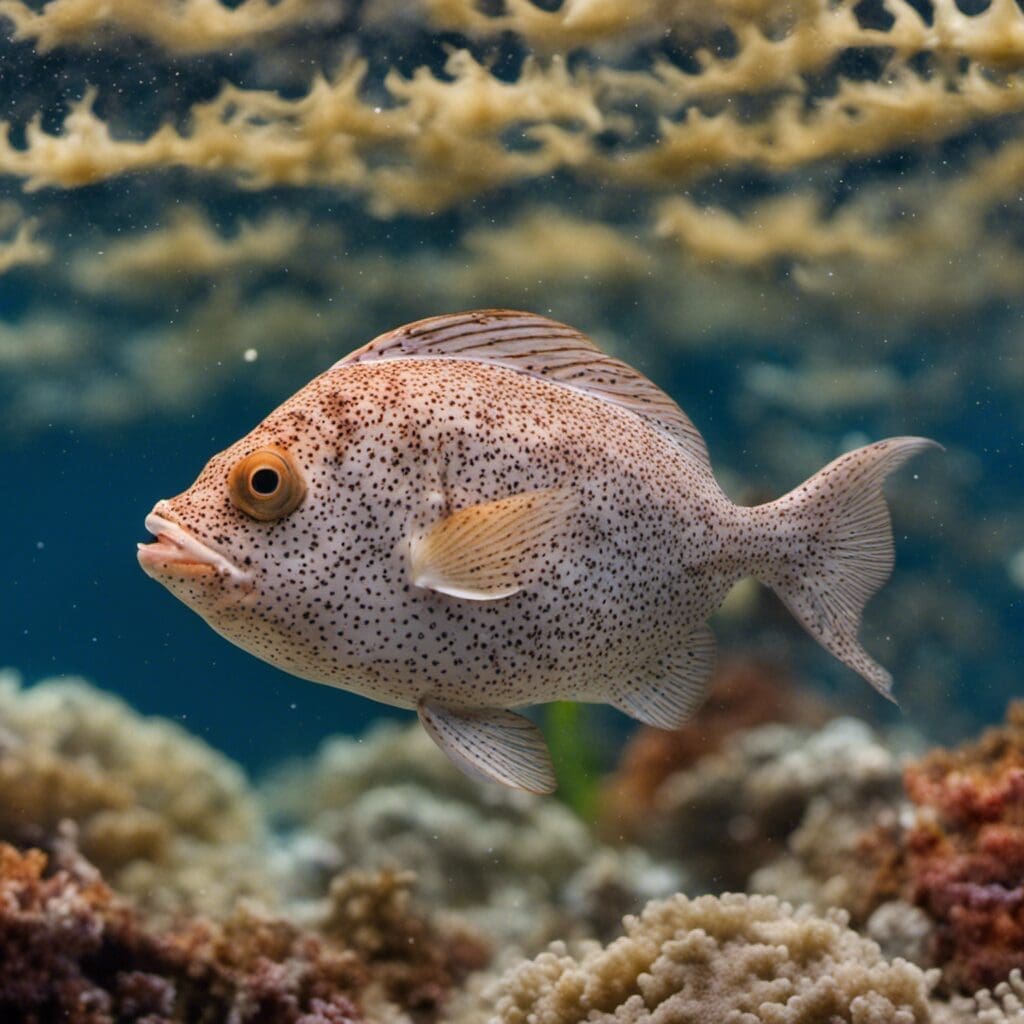Introduction
The Northern Stargazer (Astroscopus guttatus) is a unique and fascinating marine creature, belonging to the Uranoscopidae family. It’s renowned for its upward-facing mouth and unique behavior.
Conservation Status
Currently, the Northern Stargazer is not endangered and is categorized under “Least Concern” on the conservation status spectrum. Regulated capture limits and responsible fishing measures aid in maintaining the species’ abundance.
Statistics
| Stat | Average | Range |
|---|---|---|
| Length | 50 cm | 30 – 90 cm |
| Weight | 1 kg | 0.5 – 2 kg |
The average lifespan of Northern Stargazers is around 10 years.
Distribution
The species is predominantly found in the Atlantic Ocean, from New York to Florida, and the Gulf of Mexico. There are no notable migration patterns for the Northern Stargazer.
Habitats
Preferring sandy or muddy ocean bottoms, these fish inhabit saltwater environments. They dwell at varying depths from 10 to 120 meters and can withstand a wide range of temperatures.
When and Where to See
You can spot these fish throughout the year, often during daytime hours when they bury themselves in the sand with only their eyes and mouth protruding.
Best Fishing Locations
Northern Stargazers are typically found in the Atlantic Ocean, particularly along the following coasts:
- North Carolina
- Virginia
- Florida
- South Carolina
- New Jersey
How to Catch
Northern Stargazers can be quite elusive, often requiring heavy sinkers and baits like squid or cut bait. The most effective method of capturing them is bottom fishing.
Identification Guide
The Northern Stargazer is unique with a blackish-brown body and white spots. Its eyes and mouth face upward, distinguishing it from similar species.
Culinary
In terms of culinary uses, Northern Stargazers aren’t typically consumed due to their venomous spines. However, if cooked, they possess a mild flavor similar to other white fish.
Additional Information
These exciting creatures are nocturnal feeders, consuming smaller fish and invertebrates. They have few natural predators due to their venomous spines, which deter attacks.
References and Further Reading
Relevant sources and supplementary readings include Fishingsource.com, a reputable website that provides comprehensive information about various fish species, their habitats, fishing techniques, and more. Other interesting resources comprise Oceanlife.com and Marinespecies.org, which offer detailed insights into the fascinating world of marine species, including the Northern Stargazer

